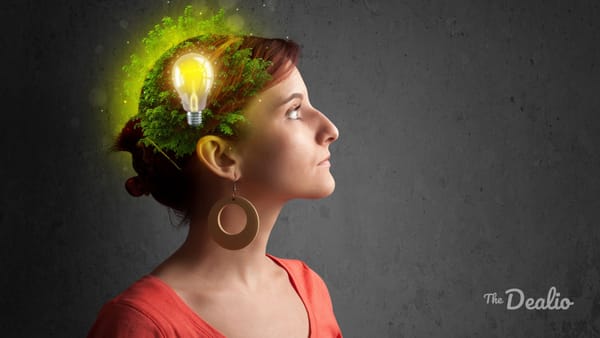Understanding Sleep Cycle Stages for Better Health

Ever find yourself staring at the ceiling at 3 AM, wondering why you can't just drift off? Or maybe you're curious about what exactly happens during those mysterious hours of sleep cycle stages? It is something most people don’t fully understand, but understanding this can drastically improve the way we function.
Sleep cycle stages are not just about feeling rested. These stages play a vital role in our overall health. From repairing muscles to sorting memories, a lot goes on while we're seemingly "off."
Understanding the Architecture of Sleep
Sleep isn't a single, uniform state; it’s a dynamic process with different stages. The body cycles through all sleep cycle stages approximately 4 to 6 times each night, averaging 90 minutes for each cycle.
These stages are broadly categorized into two sleep phases. First, there is non-rapid eye movement (NREM sleep). Second, there is rapid eye movement (REM sleep). Each stage plays a critical role in your physical and mental well-being.
Non-REM Sleep: The Foundation of Rest
Non-REM sleep has three distinct stages: N1-N3, each getting deeper.
Stage N1: Drifting Off
Stage N1 sleep stage is where your brain starts to wind down and shift away from wakefulness. You might even notice your heartbeat and breathing relaxing a bit at this point.
This is that light sleep dozing period where you're easily awakened. It's short, lasting just a few minutes. The process consists of eye movements slowing, your muscles start relaxing, and even brain activity slows.
Stage N2: Settling In
Stage N2 sleep phase involves you no longer having eye movement with an overall reduced temperature. You can start to experience slower heartbeat and breathing. As your heart rate and body temperature drop, your brain waves show short bursts of activity, believed to be your brain organizing memories.
It makes up about 45% of your total sleep. This is where the majority of the rest occurs and it allows you to recover from physical and even mental drainage from the prior day.
If you find yourself working long hours at a computer during the week, consider healthier sleep by ensuring this part of the cycle works. The sleep spindles are important.
Stage N3: Deep and Restorative
Stage N3 is the deepest part of NREM stage. It’s often referred to as slow-wave sleep, and it is where your body does some serious repair work.
Think of this stage as your body's pit stop. Tissues are repaired, and even your immune system gets a boost during this delta sleep. This makes up about 25% of your total time sleep, and adults require less stage 3 sleep as they age.
Have you ever tried to wake someone, and they seem completely out of it? Chances are they were in stage N3 sleep with their body relaxed. Loud noises greater than 100 decibels may not even wake some people in this deep stage where delta waves appear. It's during this deep sleep that things like sleepwalking and night terrors can occur.
REM Sleep: The Dream Stage
After cycling through NREM stages, you enter Rapid Eye Movement (REM sleep). If the NREM stages are about physical restoration, REM stage is where your brain takes center stage.
Your brain activity during REM can appear just as if you are awake. That might be surprising. In sleep REM the first cycle usually begins 90 minutes after you fall asleep, and only lasts around 10 minutes.
The Science of Dreaming
Your eyes dart around (hence the name), and your brain is highly active. Your blood pressure and heart rate start to fluctuate with the reduced muscle tone. Your muscles are mostly paralyzed, preventing you from acting out your vivid dreams.
This makes sense of all the rapid eye movements that naturally happen during REM. This period allows your cognitive skills to really develop with each of the sleep cycle stages. The relaxed body state continues.
The Lifespan of Sleep Cycle Stages
The patterns and types of sleep change as people mature. Newborns, for instance, spend time in REM sleep. This starts to decrease for young children with a sharp decline at the start of the teenage years.
Older adults often experience much less slow-wave sleep, sometimes none at all. There are many things to factor in with this, but age and other elements affect the entire system as a whole.
Below you'll find a comparison of Age to the amount of hours typically needed.
| Age | Amount of Sleep Needed |
|---|---|
| Newborns (birth to 3 months) | Between 14 and 17 hours. |
| Infants (4 months to 12 months) | Between 12 and 16 hours (including naptime) |
| Young children (ages 1 to 5) | Between 10 and 14 hours (including naptime). |
| School-aged children (ages 6 to 12) | Nine to 12 hours. |
| Teenagers (ages 13 to 18) | Eight to 10 hours. |
| Adults (18 and older) | Seven to nine hours. |
Factors Influencing Sleep Cycles
Sleep is a surprisingly complex process. The various external stimuli may come into play.
Age and Circadian Rhythms
The suprachiasmatic nucleus (SCN) of the hypothalamus is what is behind and driving your sleep cycle. Your circadian rhythm starts forming within just a few months of being born and helps regulate the time we feel more tired or more awake. The rhythm starts changing based on habits as we get older, showing a wide range of changes.
The body also does this as part of aging.
Gender Differences and Sleep
Men experience more nighttime awakenings and, on average, more time in stage N1 sleep. Women maintain slow-wave sleep longer.
Yet, women complain of difficulty falling asleep more frequently. More research in sleep medicine is being done to understand gender differences.
Common Sleep Disruptors
There are all kinds of sleep disruptors. Ever hear of conditions like insomnia, sleep disorders, or even restless leg syndrome?
All those disrupt natural patterns of sleep cycle stages. Any of these could lead a person to seek out a care provider to get a better night sleep.
Improving Sleep Quality
Think about spending more time in the sun, for a healthy circadian rhythm; exposing the body to light helps improve sleep hygiene habits. At least 30 minutes of exercise might increase sleep duration. This allows for more restorative sleep and healthier sleep cycle.
It is ideal to have set a consistent sleep cycle. It is easy to try this out and evaluate your day-to-day life from being awake to finally getting your mind in a good place for a proper sleep health. If sleep works against you, seeking help from healthcare providers might be an option to look at for your well being.
FAQs about sleep cycle stages
What are the 5 stages of sleep cycles?
The five sleep cycle stages consist of stages N1, N2, and N3, known as non-rapid eye movement (NREM) sleep. The final rapid eye movement (REM) is a part of these, followed by being fully awake to complete one sleep cycle.
Which is better REM or deep sleep?
Both REM and deep sleep (stage N3) serve different purposes. Deep sleep allows the body to start restoration by creating energy stores, boosting hormonal functions, as well as supporting our nervous systems.
Deep sleep is important for body restoration, but REM sleep helps our cognition and long term mental health. Both stages can impact potential health conditions. It could be worthwhile to go through a sleep study to find out where your levels are.
What does a healthy sleep cycle look like?
A healthier sleep cycle typically involves progressing through all NREM stages to the REM sleep stage. This happens repeatedly with around four to six complete cycles, on average.
The full progression through each stage without disruption defines sleep architecture. Without a full cycle, many parts of your mind and body are impacted.
Final Thoughts
From repairing tissues to organizing memories, the various sleep cycle stages are essential. Getting a full understanding allows people to improve overall life and performance, but knowing what stages impact various conditions can have an impact too. Improving your sleep quality can be as simple as small routine changes.
Next time you lay in bed for your deep slumber, rest easy with more knowledge. You can have a fully relaxed body, ready for a full sleep night.
Please subscribe to The Dealio and become a Dealio Member to unlock commenting, participate in exclusive polls, and automatically enter to win monthly drawings!

![Time Blocking vs Time Boxing: [Boost Your Productivity In 2025]](/content/images/size/w600/2025/03/Time-Blocking-vs-Time-Boxing.jpg)


